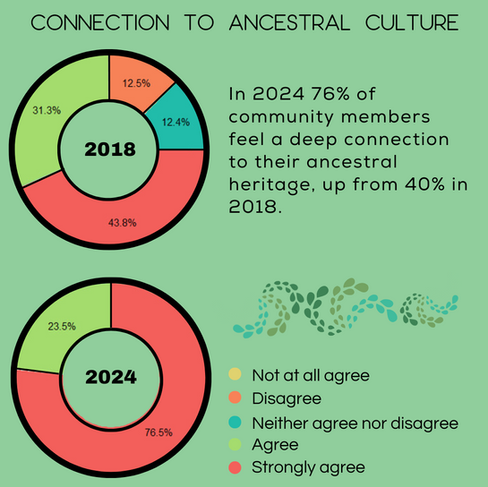
The global "30 by 30" initiative aims to conserve 30% of Earth's natural landscapes by 2030 as part of the Kunming-Montreal Global Biodiversity Framework. The goal is to reverse biodiversity loss, reduce habitat fragmentation, and enhance resilience to climate change. While this target is ambitious, much of the discussion has focused on the percentage of land that will be protected rather than on effective strategies for achieving conservation.

Local Communities as Conservation Leaders
Indigenous peoples and local communities play a crucial role in global conservation efforts. They manage land covering over 28% of Earth's terrestrial area and are responsible for 37% of the remaining natural lands. Moreover, Indigenous lands frequently overlap with protected areas, representing up to 40% of all globally protected regions. These statistics underscore their essential role as stewards of biodiversity.

Yet, many conservation initiatives prioritize external control over Indigenous and community-led approaches. While externally governed programs may have greater funding, they often exclude local leadership and fail to integrate their governance systems or knowledge. This exclusion not only causes social disadvantage and displacement but also undermines conservation goals.

Historically, conservation efforts have concentrated on limiting human activity in biodiversity-rich areas to help nature flourish. However, growing evidence indicates that involving local communities produces better results. Indigenous-managed lands enhance biodiversity through sustainable practices, such as creating cultural landscapes and co-managing ecosystems with diverse habitats. These initiatives thrive when communities feel empowered and confident in their knowledge.

Healthy Communities Lead to Healthy Ecosystems
Granting Indigenous Peoples legal rights to their territories is one of the most effective strategies for reducing deforestation and promoting conservation. Studies show that legally recognized Indigenous lands can reduce deforestation rates by up to 66%, making them a cost-effective solution for preserving key forest areas. These territories also play a crucial role in mitigating climate change and ensuring long-term ecological sustainability.
Territorial recognition secures Indigenous communities’ resources and strengthens their governance systems, protecting their lands from external exploitation. When paired with conservation programs, these rights create sustainable livelihoods and bolster resilience against environmental and social challenges. Empowered with the confidence and authority to protect their territories, they can shape solutions that benefit both people and the environment.
This empowerment goes hand in hand with a holistic understanding of well-being. For many Indigenous cultures, well-being is not just economic—it is rooted in a balance between humans, nature, and spiritual dimensions, guided by intergenerational responsibility. By integrating local knowledge and livelihood priorities into conservation strategies, projects can align resource management with cultural values, resulting in stronger and more sustainable conservation outcomes.

In Mushullakta, an Indigenous community in the Ecuadorian Amazon where Fundación Pachaysana runs the Humans for Abundance program, the shift from monoculture farming to ecosystem restoration has significantly transformed the community's connection to their ancestral heritage. In 2018, 40% of participants reported a strong connection to their ancestral culture; today, that figure has increased to over 76%. Additionally, hope for the future has risen from 40% in 2018 to 80% today. These changes highlight the positive impact of economic incentives that promote food security, cultural preservation, and economic stability.
Women and Quality Education for Conservation
Women play a transformative role in conservation and community development. In Mushullakta, women have taken on leadership roles, spearheading initiatives that improve nutrition, strengthen cultural identity and promote sustainable livelihoods. Community survey results highlight remarkable progress: 60% of participants now report having a healthy diet, compared to just 30% in 2018.

Education is equally essential for fostering sustainable conservation practices. Rooted in cultural values and traditional ecological knowledge, education empowers communities to manage their territories effectively and adapt to modern challenges. Mushullakta has embraced the importance of formal education. With the Forest School, they are ensuring their children have access to high-quality, enriching opportunities without needing to leave their homes or community.

Communities can cultivate leaders who will sustain these efforts by equipping younger generations with the skills and knowledge to protect biodiversity and build climate resilience. Together, the empowerment of women and the prioritization of education lay the groundwork for lasting conservation success.

A Call for Inclusion and Equity
Conservation success depends on recognizing Indigenous Peoples as leaders. Research consistently demonstrates that conservation initiatives guided by their knowledge and governance systems are significantly more effective. Conversely, projects that exclude or undervalue Indigenous perspectives often fail to achieve long-term, sustainable outcomes.

Honoring Indigenous governance, rights, and knowledge is not just a matter of equity—it is essential for the future of our planet. Conservation efforts that neglect their inclusion risk perpetuating historical injustices and missing a critical opportunity to address biodiversity loss and climate change.

To achieve ambitious conservation goals, we must prioritize community-driven approaches. This means supporting initiatives that empower Indigenous communities, and amplify their voices in decision-making. By standing alongside these communities and valuing their leadership, we can create a future where people and nature coexist and thrive in harmony.
References for this blog:
Dawson, Neil M., et al., (2021). The role of Indigenous peoples and local communities in effective and equitable conservation. Ecology and Society, DOI:10.5751/ES-12625-260319
Dawson, Neil M., et al., (2024). Is it just conservation? A typology of Indigenous peoples and local communities’ roles in conserving biodiversity. One Earth 7,
Esmail Nafeesa, et al., (2023). What's on the horizon for community-based conservation? Emerging threats and opportunities. Trends in Ecology and Evolution 38:7
Walker, Wayne S., et al., (2020). The role of forest conversion, degradation, and disturbance in the carbon dynamics of Amazon indigenous territories and protected areas. PNAS, 117:6.
Wali Alaka, et al., (2017). A new approach to conservation: using community empowerment for sustainable well-being. Ecology and Society 22(4):6







